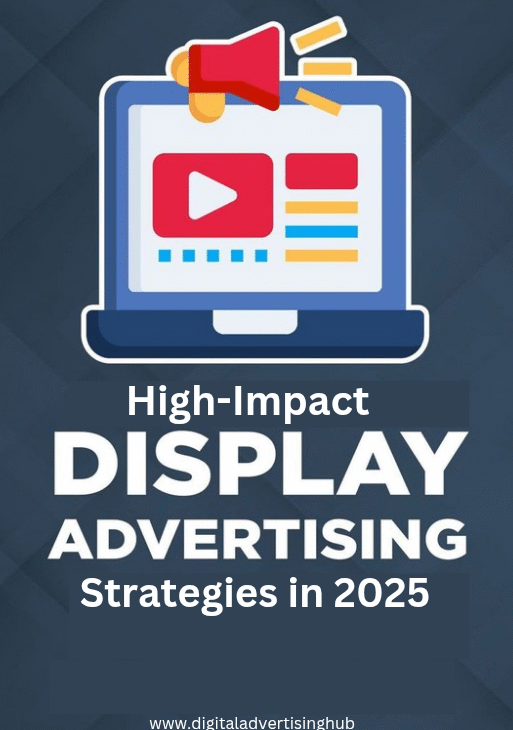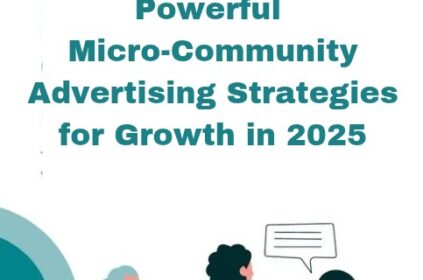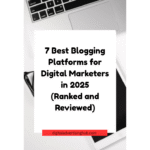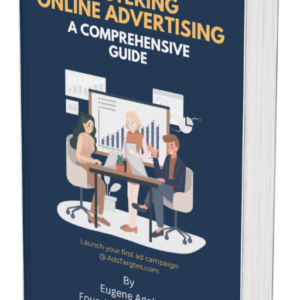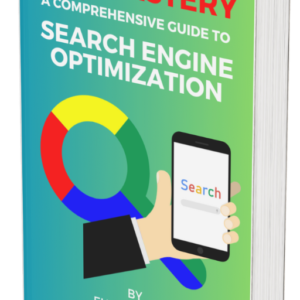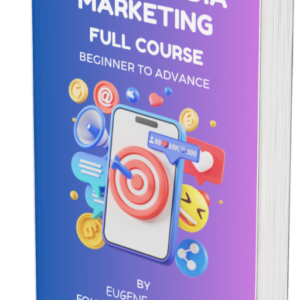Digital budgets keep climbing, yet competition and fraud eat margins just as fast. To stay ahead, marketers need display advertising strategies for 2025 rooted in hard data, strict optimisation routines, and creativity that resonates quickly.
Global ad spend is on track to top $1 trillion this year, and nearly nine of every ten display dollars will transact programmatically by next year. That scale rewards teams who combine automation with rigorous human oversight.
With that in mind, we answer the question of how display ads look in 2025, which retargeting tactics still convert, and what creative formats out-perform static banners
What Display Advertising Looks Like in 2025
Programmatic share is already above 91 percent in the United States and rising globally. Responsive ad formats dominate because algorithms remix headlines, images, and calls-to-action in milliseconds, then bid only when predicted lift exceeds CPM.
Brands that treat this as set-and-forget, however, lose ground. Winning display advertising strategies for 2025 demand:
#1. Granular creative mapping—feed at least fifteen unique assets per ad group so machine learning has room to test.
#2. First-party audience priority—cookie deprecation forces CRM and consent-based datasets to the front of targeting logic.
#3. Server-side measurement—walled gardens limit pixel visibility; piping conversions via secure APIs preserves attribution integrity.
Those shifts mean dashboards look cleaner, but the work behind them grows more technical. Marketers who master data taxonomy and privacy-safe activation build an edge with display advertising strategies for 2025 that rivals can’t copy overnight.
Retargeting Ads
Retargeting still drives efficient sales, but only when tightened. Users dislike feeling stalked; regulators increasingly agree.
Sustainable display advertising strategies for 2025 adopt a balanced framework that converts interest without triggering privacy concerns.
#1. Shorter lookback windows (7–14 days) ensure ads reference active intent, not a fleeting browse from months ago. Conversion probability plummets 40 percent after two weeks, so trim the tail.
#2. Sequential messaging—first ad reminds, second adds social proof, third introduces urgency—mirrors consumer psychology. Each step nudges commitment rather than repeating the same creative ad nauseam.
#3. Dynamic creative feeds pull real-time price, stock, and shipping data. Shoppers see the exact variant they considered, closing the relevance gap that kills impulse buys.
Marketers often ask about the best practices when advertising on retargeting ads. Well, the answer is calibrated respect: cap impressions at two per 24 hours, rotate value props every 48 hours, and suppress converted IDs instantly.
This cadence keeps ROI strong, reduces wasted impressions, and ensures display advertising strategies for 2025 nurture goodwill even as privacy frameworks like GDPR, CCPA, and Nigeria’s NDPR tighten enforcement.
Best Practices for Banner Ad Design
Leaderboard (728 × 90) remains the most used size, adopted by 57 percent of advertisers, yet static alone no longer competes.
Effective display advertising strategies for 2025 pivot on hybrid creative that loads fast, complies with platform rules, and invites subtle engagement.
#1. Static first frame guarantees instant render and policy compliance across conservative exchanges. Delayed loads cost impressions in competitive auctions.
#2. Sub-one-second subtle animation—a gentle fade or button pulse—draws the eye without tripping epilepsy guidelines or platform auto-rejects.
#3. Clear focal point and single CTA focus attention. Tests show banners with two CTAs dilute click-through rate by 18 percent. Thus, it is clear that simplicity converts.
#4. Universal accessibility sets baseline inclusivity: 4.5:1 contrast, minimum 14 px text, and zero autoplay audio ensure readability for colour-blind or hard-of-hearing users.
Adding micro-interactivity—hover-triggered colour shifts or expandable panels—boosts attention time, yet file weight must stay under 150 KB to clear programmatic pipelines.
A modular design system lets marketers swap imagery and copy without rebuilding code, ensuring creative scales as smoothly as bids.
Embed these design truths inside global display advertising strategies for 2025 to keep assets fresh, compliant, and conversion-ready.
Creative Display Ads Setting the Benchmark in 2025
Brands that top peer-review galleries share uniform characteristics: hero visuals cropped for vertical scroll, concise copy under 35 characters, and value propositions micro matched to customer cohorts. You can replicate such success by:
#1. Building modular templates—design once in Google Web Designer, then swap background, headline, price, or language without touching code.
#2. Pre-testing via guerrilla panels—ask 10 target consumers which ad they’d click, iterate twice, and only then launch at scale. Small tweaks to colour contrast or headline length frequently lift CTR by double digits.
#3. Versioning by funnel stage—upper-funnel banners push emotion, mid-funnel spots emphasise benefit, bottom-funnel units stress urgency or scarcity.
Support each rollout with creative-level metrics: view-through rate, interaction time, and post-click dwell.
Sunset any asset once performance dips 15 percent below ad-group average. The outcome is an agile library that satisfies algorithm appetite yet stays recognisably yours, the hallmark of resilient display advertising strategies for 2025.
Interactive Display Ads
Interactive units—360-degree product spins, quiz-powered carousels, shoppable videos—have exploded on major exchanges because interaction equals intent.
Folding them into display advertising strategies for 2025 demands a methodical checklist:
#1. Confirm format compatibility with every supply-side partner; some SSPs still can’t render interstitial HTML5 or rich-media MRAID smoothly.
#2. Gate engagement behind micro-commitments like a colour picker or size selector, rather than a full lead form. Reducing friction preserves curiosity and minimises bounce.
#3. Track engagement depth—five seconds of hover or swipe typically foreshadows double-digit ROAS gains; anything shorter rarely correlates with purchase intent.
Wyzowl reports 87 percent of marketers credit video ads with direct sales impact; merge that data with interactive mechanics so campaigns upgrade from passive reach to participatory experience.
Embed interaction metrics—dwell time, completion rate, secondary click-through—into your attribution model.
Finally, set weight-based bid modifiers: raise bids when engagement depth exceeds in-category median.
This loop ensures display advertising strategies for 2025 remain creative yet performance-led, scaling interactivity where it matters and throttling spend where novelty fails to convert.
Optimising Supply Path and Software Choice for Maximum ROI
Supply-path optimization (SPO) surged after ads.txt yet still hides inefficiencies. Modern display advertising strategies for 2025 prune hops to protect both budget and brand.
First, map every exchange in your bid stream, flagging those without TAG or MRC anti-fraud seals.
Removing just two redundant exchanges can shave 12 percent off CPMs while cutting invalid traffic below 5 percent.
Next, layer verification—Integral Ad Science, DoubleVerify, or Moat—to screen every impression for viewability, domain spoofing, and ad clutter.
Technology stack decisions compound these gains. Roughly 22 percent of marketers already rely on an all-in-one demand-side platform; adoption climbs yearly as cookie deprecation nears. Select DSPs that offer:
#1. Unified pacing algorithms to balance budget and impression quality across campaigns and geos.
#2. Bid shading that anticipates second-price auction premiums and trims overpaying by up to 20 percent.
#3. First-party data on-ramp so hashed CRM IDs replace soon-to-expire third-party cookies.
Pipe SPO insights back to planning: downgrading channels that chronically exceed 5 percent IVT, reallocating toward partners with transparent auction mechanics, and auto-blacklisting spoofed subdomains.
When every bid clears a lean, verified route, display advertising strategies for 2025 deliver maximum reach at minimum waste—no manual policing required.
Maximising Programmatic Display Ads: 7 Tips for 2025
Programmatic now accounts for the vast majority of impressions, but efficiency hinges on disciplined execution.
Fold the guidelines below into your display advertising strategies for 2025 so every bid clears cleanly and profitably.
#1. Activate bid shading to pay closer to true second-price levels, trimming CPMs by up to 20 percent.
#2. Use algorithmic pacing rather than daily even-splits; smart pacing front-loads spend when auctions are cheapest.
#3. Layer private marketplace (PMP) deals for premium inventory, keeping open-exchange buys for scale.
#4. Apply audience suppression lists to avoid paying twice for users already captured in cheaper remarketing pools.
#5. Adopt contextual signals (page topic, sentiment) as cookies fade; many DSPs now offer AI-based contextual targeting that rivals look-alike accuracy.
#6. Monitor log-level discrepancies—click vs. win data—to detect spoofed domains early.
#7. Run weekly creative rotation so programmatic models always have fresh variants to test.
Track win rate, effective CPM, and post-click dwell to identify which exchanges or deal IDs deliver quality.
When data shows one supply path consistently falls below a 65 percent view-through benchmark, reallocate budget immediately.
This closed-loop hygiene keeps programmatic buys lean and aligned with overarching display advertising strategies for 2025.
Best Practices to Optimize Display Advertising for in 2025
Google’s network still offers unrivalled reach, but default settings rarely deliver peak ROI.
Integrate these recommendations into ongoing display advertising strategies for 2025 to extract full value from Google Display:
#1. Start with Responsive Display Ads (RDAs)—Google’s machine learning assembles text and image combinations that out-click static units by an average 10 percent.
#2. Provide at least 15 images and 5 headlines to maximise RDA permutation testing. Asset scarcity limits algorithmic lift.
#3. Segment campaigns by funnel intent: prospecting, remarketing, and customer-win-back. Bid multipliers differ for each stage.
#4. Exclude in-app game placements unless your offer is gaming-adjacent; historical data shows conversion rates often lag site traffic by 30 percent.
#5. Use Detailed Demographics and Affinity segments sparingly; tight first-party audiences routinely outperform broad affinity groups.
#6. Enable data-driven attribution inside Google Ads so conversions weight toward true assist channels.
#7. Sync conversions via Enhanced Conversions API to preserve measurement accuracy as third-party cookies sunset.
Review placement and search-term reports weekly, blacklisting low-quality sites and adding high-performers to a managed placement list.
This continuous refinement culture helps Google buys dovetail neatly with wider display advertising strategies for 2025, ensuring every impression serves both reach and revenue.
Selecting the Best Display Advertising Platforms in 2025
The marketplace now spans everything from DV360 to specialised CTV networks. Choosing the right mix is critical; platform fees and inventory quality vary widely.
Anchor your evaluation on the criteria below, then bake final selections into holistic display advertising strategies for 2025.
#1. Inventory Quality & Viewability: Demand TAG-certified or MRC-accredited partners. Platforms averaging below 70 percent viewability inflate effective CPMs once hidden impressions are removed.
#2. First-Party Data On-Ramp: Post-cookie resilience requires seamless CRM, CDP, or clean-room integrations. Reject vendors lacking hashed-email matching or secure API uploads.
#3. Advanced Optimisation Features: Look for unified pacing, real-time creative A/B testing, and AI-driven contextual targeting. These functions offset rising media costs by squeezing more performance from each impression.
#4. Transparent Pricing: Flat tech fees simplify forecasting, whereas hidden take-rates can siphon 15 percent of spend. Insist on log-level cost disclosure.
#5. Cross-Channel Reach: CTV, DOOH, and audio placements round out omnichannel narratives. Platforms confined to web banners risk saturation.
This structured approach protects budget, safeguards brand safety, and future-proofs display advertising strategies for 2025 against market volatility.
Static vs. Dynamic Ads: Which is Better?
Responsive HTML5 units dominate conference decks, yet real-world data shows static banners can still win—especially in compliance-heavy sectors like banking, insurance, and pharma where creative approvals lock months in advance.
AdRoll’s 2024 benchmark study reported a 14 percent lower CPA for statics on tightly segmented remarketing lists.
To decide how each format fits your display advertising strategies for 2025, weigh three core trade-offs:
#1. Creative control — static files guarantee every pixel, disclaimer, and brand element stays intact. Dynamic templates risk odd combinations when algorithms shuffle assets. In regulated niches, a single malformed disclosure can trigger takedowns or fines.
#2. Load speed — static JPG/PNG banners average 30–50 KB, often half the weight of HTML5 assemblies. Faster load improves viewability scores and preserves engagement on slower mobile networks.
#3. Personalisation potential — dynamic ads excel at real-time catalogue pulls, price updates, and local inventory messaging. For e-commerce or travel, this flexibility drives relevance and lifts ROAS.
A hybrid approach often wins: deploy static hero units in prospecting campaigns to cement brand authority, then retarget engaged users with dynamic product carousels.
Coordinate frequency caps so users see no more than four impressions of each format per day, mitigating fatigue.
By letting campaign objectives—not trendiness—dictate the format mix, your display advertising strategies for 2025 stay cost-efficient, compliant, and conversion-focused.
Software Stacks Powering Display Advertising Strategies for 2025
Tool choice increasingly separates growth teams from those drowning in manual tweaks. The optimal stack for modern display advertising strategies for 2025 layers three interoperable tiers, each feeding clean data to the next:
#1. Demand-Side Platform (DSP) — seek unified pacing across channels, bid-shading algorithms that trim second-price premiums, and native first-party data connectors for post-cookie resilience. Examples include The Trade Desk and DV360, both offering log-level transparency.
#2. Creative Management Platform (CMP) — products like Celtra or Bannerflow auto-resize, localise, and version assets in bulk, cutting design turnaround by up to 60 percent. Look for bulk translation workflows, instant QA previews, and direct push to your DSP.
#3. Verification & Analytics Layer — DoubleVerify, IAS, or Moat overlay viewability, brand-safety, and fraud detection. Pipe these metrics into BI dashboards so marketing, finance, and compliance share one truth.
Integrate via server-to-server APIs wherever possible; browser-based pixels lose fidelity as privacy rules tighten.
Schedule quarterly stack audits: trim unused licences, benchmark latency, and ensure every vendor exports raw impression logs for independent analysis.
Document findings in a tech-stack matrix mapping cost, feature usage, and ROI impact. Treat martech like a product—iterate versions, sunset bloat, and pilot emerging tools in sandbox campaigns.
When each component has a clear purpose and measurable outcome, your display advertising strategies for 2025 free human talent to focus on creative ideation, deep audience insights, and incremental conversion lifts rather than button-click busywork.
Conclusion
Marketers often chase quick wins, yet the teams that thrive build rituals. Set weekly reviews of invalid-traffic dashboards, fortnightly creative swaps, and monthly SPO audits.
Commit to cross-functional meetings so design, data, and media teams refine display advertising strategies for 2025 together.
When each player knows the metric that matters—viewability, conversion rate, or lifetime value—incremental improvements stack.
Programmatic will dominate, privacy will tighten, and formats will evolve, but disciplined processes ensure display advertising strategies for 2025 stay adaptable.
Recap the essentials: monitor shifts, deploy eight proven best practices, retarget respectfully, upgrade creative, embrace interactivity, and police supply paths.
Do this continuously, and display advertising strategies for 2025 will not just “actually work”; they’ll compound results quarter after quarter.

